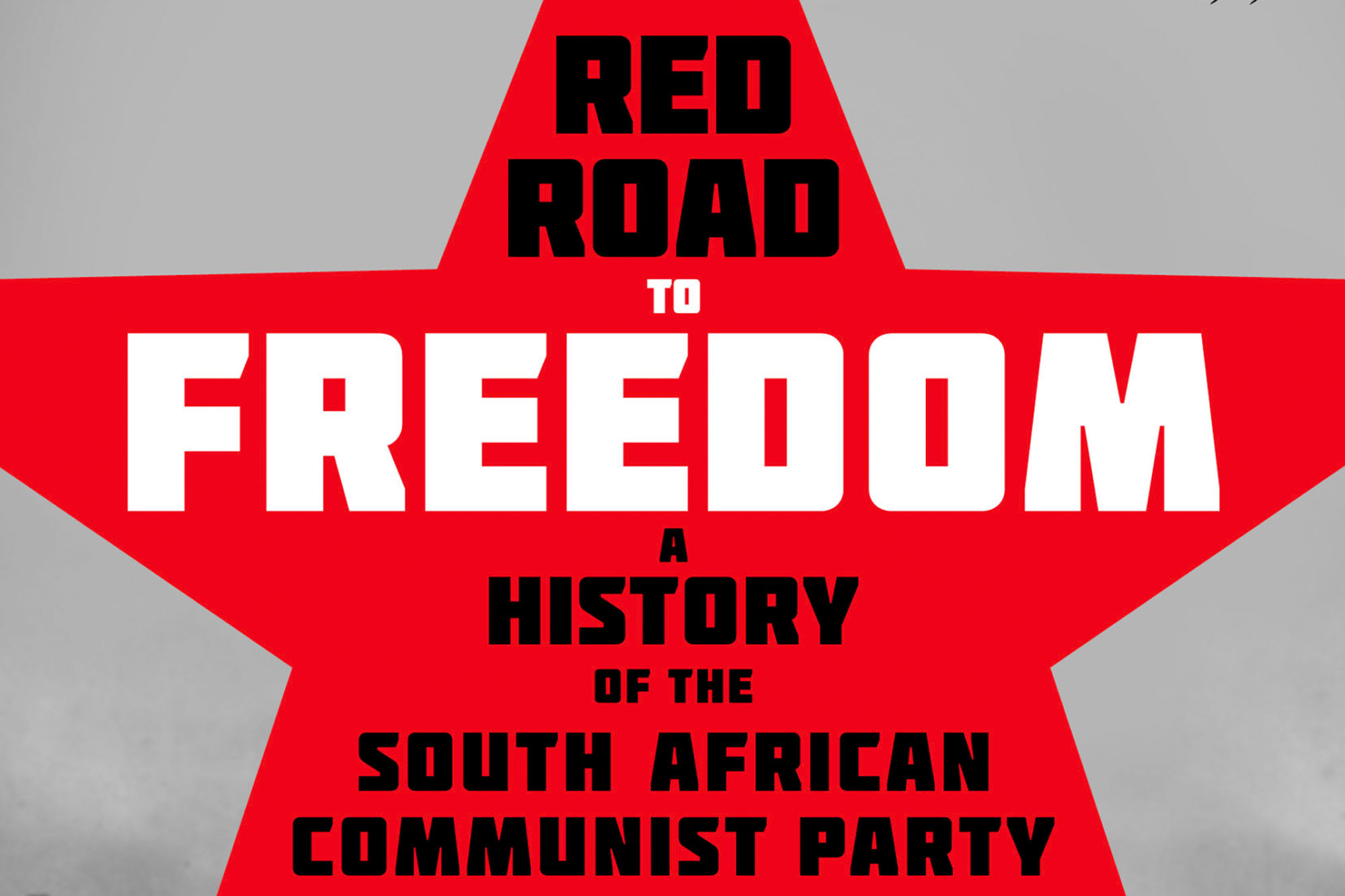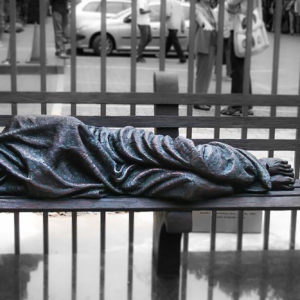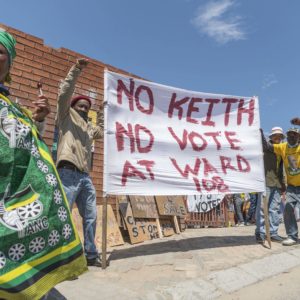Rich historical resource on the SACP’s trajectory
From a non-Marxist perspective, Tom Lodge recognises the South African Communist Party’s often-underplayed contribution to the ANC becoming a victorious, mass-based organisation.
Author:
13 January 2022

This is a lightly edited excerpt from Jeremy Cronin’s review of Tom Lodge’s book Red Road to Freedom: A History of the South African Communist Party 1921–2021 (Jacana, 2021). This review was first published in the centenary edition of African Communist (Issue 205, Second and third quarters 2021).
In late July 1921 a pioneer Communist Party of South Africa, later renamed the South African Communist Party (SACP), was launched in Cape Town at a conference attended by 14 delegates, all of them white. Today, the SACP has a membership of over 300 000. Coinciding with the centenary of the party, Professor Tom Lodge has published this long-awaited work, Red Road to Freedom: A History of the South African Communist Party 1921–2021.
Some 40 years of research have gone into this major scholarly achievement, which is written sympathetically but from a non-Marxist perspective. In the course of his own earlier research for his Black Politics in South Africa Since 1945, published in 1983, Lodge was intrigued by the relatively unheralded role of communists in the late 1940s and through the 1950s as the African National Congress was transformed into a campaigning, mass-based organisation.
The communist party’s role in this, Lodge argues, was often seriously underplayed in earlier academic work. “From 1945”, Lodge now writes, “knowledge of the party’s development becomes vital for any understanding of the mainstream of black politics in South Africa.” In many ways the party’s extensive ideological, organisational and mobilising impact on the South African freedom struggle, and particularly on the ANC, is the central theme of the book. But to what extent has this role been beneficial or problematic?
And what, if any, is the relevance now of this influence at a time when, after nearly 30 years as a ruling party in government, the ANC by its own admission is facing serious internal crises of factionalism, endemic corruption and waning if still significant electoral support? While rebalancing the tendency to diminish the influence of the SACP in the post-1945 period, Lodge is equally effective in countering arguments that the party’s historical role was little more than a manipulative entryism into the mainstream ANC movement, perhaps acting on behalf of Soviet masters in the Kremlin.
Related podcast:
That was something the apartheid regime naturally frequently alleged. But it is also an argument advanced with greater sophistication for the period of the late 1950s through the 1980s by Cold War journalist writers like Stephen Ellis and RW Johnson. Lodge largely disagrees with these views, not least because, notwithstanding the party’s frequently repeated aspiration to be a tight “democratic centralist”, vanguard formation, its own composition and internal culture was typically diverse and pluralistic.
The detailed mapping of this diversity and Lodge’s particular interest in the internal sociology of the party is one of the great strengths of the book. Building on archives, extensive interviews and personal memoirs, Lodge has an acute eye for biographical detail that captures the complexity of historical moments and of the party members immersed within them.
The early chapters trace formative influences upon the party, like the important role of radical white trade unionists and the syndicalism of Daniel de Leon. Lodge corrects the tendency, notable in some of our own SACP publications, to read the largely reactionary role played by white workers in the second half of the 20th century back into an earlier and more militant period. Another important early influence came from the wave of Jewish immigrants fleeing racist persecution in Eastern Europe.
Immigrant anti-Zionist, Jewish Bund socialists provided an important channel of information on and communication for the South African Left with the revolutionary developments unfolding in Russia. Their own direct experience of racist persecution also contributed to embedding traditions of anti-racism in the emerging party. In fact, an inclusive non-racialism, the foundation of the postapartheid South African democratic Constitution, is one of the major legacy contributions of the party to the South African reality.
Related article:
As Lodge acknowledges, from the outset and for several decades, the Communist Party was the only political party in South Africa with a non-racial membership. But, in the first years there was, as Lodge delicately puts it, a certain “fluidity on the issues of race and cross-communal solidarity”.
The party’s non-racialism was derived from its founding commitment to proletarian internationalism. But who were proletarians? Eddie Roux, a key figure in the formation of a Young Communist League in the early 1920s, was later to remember: “I was not consciously hostile or prejudiced against Black men. But for me the ‘workers of the world’ were the white miners, tramway-men, building artisans and so on, who had trade unions and fought strikes.”
Bill Andrews, trade unionist and founding chairperson of the party, “is an exemplary case”, Lodge argues for these early years, “in his inconsistency and ambivalence on racial issues, intuitively and emotionally finding his sense of community within the confines of white industrial neighbourhoods and yet intellectually ready to recognise that the real working class included Black South Africans”.
By 1924 the CPSA was already claiming a large majority of Black members, who brought their own impact into the party. “If South African revolutionaries depended initially upon imported visions and an immigrant lexicon”, Lodge writes, quite soon African party members “like William Thibedi and Hamilton Kraai began adapting and domesticating these exotic visions and applying this foreign lexicon to their own circumstances”.
This is certainly true. However, the resources drawn upon by the early African party members for this indigenisation of Marxism at a practical level do not receive the same attention in Lodge’s work as the diverse currents drawn upon by the early white pioneers of socialism. As they organised in Black townships and rural villages these African communists invoked both cultural traditions of primary resistance to colonialism, including choral song and a liberatory Christian vocabulary that would have been familiar to their audience.
This was not a simplistic case of Marxism being lost in translation, nor was it merely folkloric. These practices were embedded in traditions of collective resistance and self-help, co-operative effort that infused party activism and were to give the party a 100-year durability, despite challenges and failings. However, it was only in the late 1920s, and then unevenly amid considerable internal controversy, that the party at least formally adopted a programmatic position that promised to ground its Marxism strategically in the South African reality.
Related podcast:
This was the so-called “native” or “Black republic thesis” on South Africa developed by the Comintern (CI). It argued that the struggle for socialism in South Africa necessarily required, as an essential “first stage”, a broad national liberatory struggle for majority rule with minority rights guaranteed for all. The party was urged to work with emergent movements among the African majority and transform them into “fighting nationalist organisations”.
The ANC was specifically mentioned. Lodge’s interests and strengths do not particularly lie in exploring Marxist theoretical perspectives and debates, nevertheless his in-depth archival work provides a useful account of the development of the Black republic strategic perspective. This includes consideration of the contributory role of the South African communist and trade unionist James la Guma in the course of his engagements in Moscow with Bukharin and leading CI personalities.
As the official South African national section of the CI, the party at its 1929 Congress was obliged to endorse the CI’s “Black republic” resolution as its own. While some in the leadership like La Guma were strong supporters, a majority of the leadership including other Black leaders in the party were less than enthusiastic. There was concern that reference to a Black republic would alienate white workers.
There was also considerable scepticism about the call to work with and build the ANC into a fighting national liberation movement. At the time the ANC was seen largely as a dormant formation dominated by traditional leaders and mission-school educated liberal professionals.
The South African party’s internal differences on the strategic perspective were compounded by a sharp turn taken by the CI. Paradoxically, at the very time that the CI was insisting on South African communists engaging with the ANC, the broader strategy encouraging alliances with national movements in the colonial and semi-colonial world was being turned on its head. As Lodge usefully notes, the CI’s so-called “left turn” against “right deviationism” was partly precipitated by the April 1927 attack by the nationalist Kuomintang on its former communist party ally in China.
There was also what was to prove a disastrous hardening in Europe of the line on alliances with social democratic parties, now characterised as “social fascists”. The “left turn” in the CI, the beginning of Stalinisation, also saw the formation now asserting a much greater top-down, factional interference in the affairs of local parties. The strategic potential of the majority-rule, “Black republic” resolution for grounding a Marxist practice in the South African reality was no sooner advanced than the rug was pulled from under the feet of the already hesitant South African party.
Strategic confusion was compounded by factional interference by CI emissaries and damaging party expulsions of “right deviationists”. Through the early 1930s membership and influence dwindled to such an extent that the newly elected national secretary, Moses Kotane, wondered at the time whether the party would survive at all. It was only during the 1950s that the now-banned, underground SACP began to recover a more effective strategic characterisation of the struggle for socialism in the South African reality.
Related article:
In doing so, it built on the earlier Black republic thesis and the idea already implicit in the late 1920s that South Africa was a colonial formation of a “special type” – being at once a semi-peripheral, mineral exporting subordinate within the imperialist system, and a formation characterised by an “internal colonialism”, with a well-rooted white minority ruling bloc dominated by an established South African bourgeoisie nationally oppressing a Black majority. A central theme of Lodge’s book, as earlier noted, is the major influence of the SACP upon the ANC, in particular from the mid-1940s.
The party, he writes, “brought with it a range of helpful resources to the larger organisation: technical and professional skills, organisational habits … and skilful managers – ‘cadres’ as the party liked to call them – renewing these successively through selective recruitment and careful preparation”.
Inside the country in the 1970s, with the leadership of both the banned ANC and SACP largely in exile, “the party installed its own remarkably resilient networks that helped underpin wider political formations and bring to them a perception of inclusive loyalty”.
Coming from a non-party and non-Marxist scholar, Lodge’s detailed and generally sympathetic account of the massive historical contribution of the party to the South African struggle is a major and surely justified tribute. However, there are two general weaknesses in Lodge’s account, both of which become more apparent in his final chapter dealing with the post-1990 period.
In the first place, while Lodge is excellent in acknowledging the impact of the party on the ANC, less attention is paid to the significant reciprocal influence of the ANC and broader liberatory movements on the SACP. In the second place, for Lodge Marxism and the party’s programmatic perspectives tend to be treated as interesting curiosities, sometimes even as quasi-religious ideologies, rather than substantive attempts at strategic analysis of capitalism and of the South African and global reality.
For instance, in dealing with the period of the mid-1960s to mid-1970s, the years in which the movement was dealing with a major strategic defeat, Lodge is excellent in outlining the role of party activists in helping to rebuild a shattered and largely exiled movement. But the strategic perspectives that informed collective and individual party heroism and dedication in this period are not really taken seriously by Lodge. According to Lodge, the party’s Marxism, however mistaken it was, at least provided a “morale-boosting teleology”, the idea that history was “on our side”, to a wider movement particularly in periods like the mid-1960s to mid-1970s when the struggle was at a low point.
Related article:
Whatever their “flaws and mistakes”, he writes, “the party’s strategic understandings … served as sources of hope and moral certainty, not just for party ideologues but among the ANC’s own rank and file, helping to sustain the movement and ensure its survival”. Of course, there is some truth in this. The party’s Marxism of the late 1960s and 1970s, with its optimistic, teleological inclinations certainly inspired many, including non-communists in the midst of the iron-fisted years of apartheid’s ascendancy.
This is evident, for instance, in the Strategy and Tactics document emerging from the ANC’s 1969 Morogoro conference in which the prospects for a radical national liberation advance were said to be enhanced by the fact that the South African struggle was “taking place within an international context of transition to the socialist system … in a new kind of world … which is no longer monopolised by the imperialist world system”. As we know, this assumption of an imperialist system on the wane in the face of an ascendant socialism, was sadly overly optimistic. It assumed that history basically advances in a straight line, stage by stage.
However, the ANC’s Morogoro analysis of the prospects for and imperative of a radical South African National Democratic Revolution, taken largely from the SACP’s 1961 programme, did not rest solely on what then seemed to be the steady advance of socialist-oriented national democratic struggles. It also rested on the correct analysis of the class character of South Africa, in which the overwhelming majority of South Africans were proletarianised.
This reality remains absolutely relevant in the present but is effectively ignored by Lodge. Another significantly under-researched area in Lodge’s book, is the reciprocal influence of the ANC, and more generally of Black emancipatory struggles upon the SACP. Implicit throughout but insufficiently explored for its contradictory pushes and pulls is the relative uniqueness and complexity of the ANC-SACP relationship. Going back to the 1920s there has been overlapping membership and, subsequently, overlapping leadership. At first “dual membership”, as it came to be known, was confined to Black communist party members (including those who would later be considered “coloured”, like Jimmy la Guma and Johnny Gomas).
But from the 1980s the ANC opened its national executive committee to non-Africans and then subsequently its general membership to all South Africans. This dual membership of two political formations has had a rich if complicated history. Most obviously, it has resulted in a considerable degree of symbiotic influence. The ANC was launched in 1912, almost a decade before the party. With its own long tradition of struggle for an inclusive constitutional democracy, the ANC was not the creation of the party, not a simple communist front. Even at the height of the SACP’s influence upon the wider movement, the ANC retained its own independent lines of contact with, for instance, the Soviet bloc of countries. If there were important conjunctures, as Lodge amply demonstrates, in which the party played a key role in assisting the ANC overcome stagnation or disorientation, there were also moments in which it could be argued that these roles were somewhat reversed, typically in complex ways.





